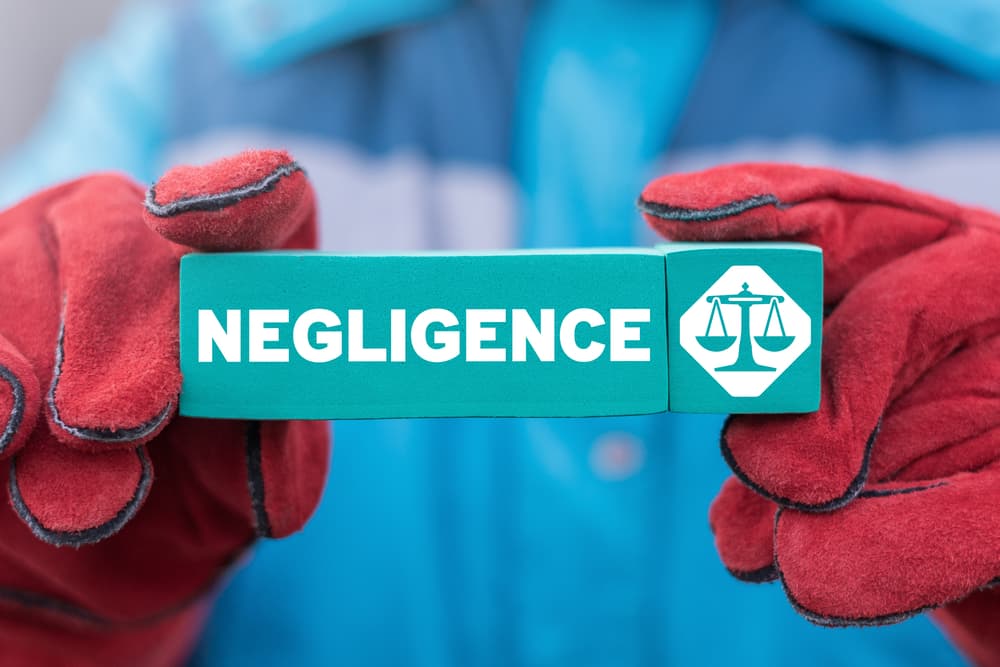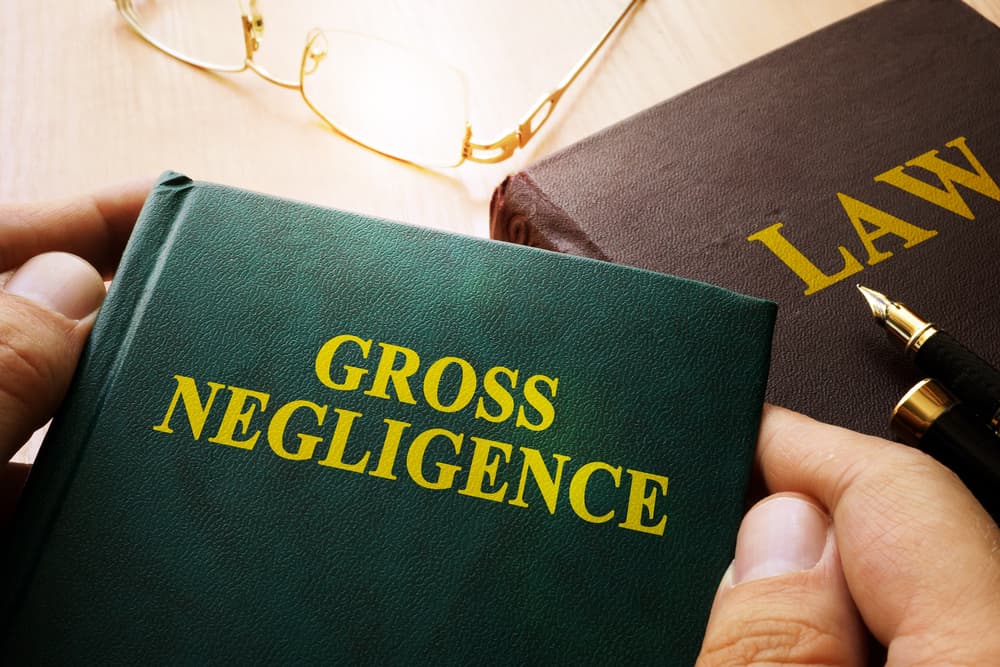Most accidents occur due to someone’s negligent behavior.
When a person suffers an injury due to someone else’s negligence, they may recover compensation by filing an insurance claim or suing the negligent party. After all, the injured party should not have to shoulder their burdens, which may include financial losses, by themselves.
However, suing for negligence is no easy task, especially if you do not understand what constitutes negligent behavior and how to prove that another party was negligent.
If you suffered injuries in an accident, contact an attorney to get legal counsel. A skilled Bronx personal injury attorney understands the complexities and nuances involved when filing a lawsuit based on negligence and can help you prove your case.
What Is Negligence?

Many people use negligence without truly understanding its meaning. While many think negligent is synonymous with careless, the legal definition of the term is more complex.
In a nutshell, negligence means that a person or entity fails to exercise reasonable care. Nowadays, most of all personal injury cases filed by injured victims are based on this legal theory.
Whether or not a defendant (a person or entity sued for negligence) is negligent is determined based on the reasonable person standard. In other words, judges and juries look at the evidence presented by the plaintiff (the injured party) or their attorney and decide what a reasonable person would have done in the defendant’s place in similar circumstances.
In personal injury law, negligence is the legal concept for holding individuals and entities accountable for the damages they cause.
Some examples of negligence in personal injury cases include:
- A car driver who operates a motor vehicle while distracted by their cell phone
- A truck driver who operates the truck under the influence of alcohol and causing an accident
- A dog owner who fails to keep their pet on a leash, resulting in a dog bite incident
- A property owner who fails to address a dangerous condition on their property, resulting in a slip and fall accident
Many of these scenarios are resolved through an insurance claim settlement. However, if the at-fault is uninsured, does not have sufficient insurance coverage, or a settlement is otherwise not an option, the injured party can sue the at-fault party for negligence to get monetary compensation for their losses and damages.
The compensation is meant to make the plaintiff whole again and bring them as close to their pre-accident condition as possible.
The Four Elements of Negligence
As with any lawsuit, personal injury lawsuits require proof of certain elements.
In negligence-based lawsuits, plaintiffs must prove four elements to succeed in their case and obtain the compensation they are asking for:
- The defendant owed them a duty of care
- The defendant breached the duty
- The breach caused them harm (also known as causation)
- They suffered damages
We will detail these four elements to help you understand if you have a valid compensation claim. Consider seeking legal counsel if proving negligence seems like an arduous task. An attorney can help you gather evidence to support your case and protect your right to fair compensation.
1. Duty of Care
The first element requires the plaintiff to show that the defendant owed them a duty of care. In other words, this duty refers to the legal obligation imposed on an individual under certain circumstances.
For example, all motorists owe others a duty of care to obey all traffic laws and drive safely.
Suppose a driver fails to comply with applicable traffic laws (e.g., by not paying attention to the road) and ends up causing a car crash. In that case, the injured victim can sue them for negligence and cite the general duty every driver owes to others.
2. Breach of Duty
The second element requires the plaintiff to prove that the above-mentioned duty was breached. This element is based on the reasonable person standard. In other words, the plaintiff must show by a preponderance of the evidence that the defendant’s conduct fell below what a reasonable person would have done in a similar situation.
To determine whether or not a duty was breached, the judge or jury will determine what a reasonable person would do under the circumstances.
Using our example, a victim injured in a distracted driving accident can argue that the defendant breached the duty of care by not paying attention to the road. It can be done by demonstrating evidence of the breach, including records from the defendant’s cell phone.
3. Causation
The third element is often the most complicated part of proving negligence in a personal injury case. As the name implies, causation requires the plaintiff to show that the defendant’s negligence was the cause of their injury and losses.
In other words, the injured party must prove that their injuries would not have occurred but for the defendant’s negligence.
Using our example will mean proving that the plaintiff would not have suffered an injury but for the defendant driving distracted.
Even if a defendant breached a duty of care owed to the plaintiff, they cannot be held liable for damages if the plaintiff cannot prove causation.
In fact, even if the defendant was negligent, they cannot be liable if there is no link between the breach and the accident (e.g., the driver was distracted, but it was not a direct or proximate cause of the accident in which the plaintiff suffered an injury).
4. Damages
The fourth element is known as damages. The term refers to the amount of money the defendant owes to the plaintiff. Damages relate not only to physical and financial losses but also to emotional and other intangible losses.
In many cases, proving damages requires expert testimony (e.g., in cases where the plaintiff’s earning capacity is diminished or the plaintiff will require lifelong medical care).
If the plaintiff did not suffer any actual damages, they would typically be unable to sue the negligent party, even if all three elements of negligence (duty, breach, and causation) have been successfully established.
Using our example, a plaintiff can show they suffered damages in a distracted driving accident by demonstrating proof of their medical bills following the accident, including ambulance costs, medication costs, and other expenses related to medical care.
The injured party might also be entitled to compensation for their loss of income by demonstrating pay stubs or asking their employer to testify to prove the extent of lost income due to their inability to work.
Types of Negligence in Personal Injury Cases

A person may be considered “negligent” in many ways in a personal injury case.
Depending on jurisdiction and the severity of the conduct, the law recognizes four types of negligence:
- Gross negligence. Gross negligence is a term used to describe the most extreme form of negligence when the defendant demonstrates reckless disregard for the safety or lives of others. An example of gross negligence will be drinking and driving.
- Contributory negligence. This is a legal doctrine only four states still adhere to that bars injured parties from recovering compensation unless the defendant is 100 percent at fault for their injury. These states include North Carolina, Maryland, Alabama, and Virginia.
- Comparative negligence. This legal doctrine allows injured parties to obtain compensation even if they were partially at fault for their injury. Under the rule, the victim’s recoverable damages are reduced proportionally to their degree of fault. There are two forms of comparative negligence: pure and modified. The latter allows victims to get compensated as long as they are responsible for less than half of the fault, while the former does not bar recovery even if the injured party is mostly at fault. For example, New York is one of the handful of states that adhere to the pure comparative negligence doctrine, which allows injured victims to recover from a negligent defendant even if they are 99 percent at fault (NY CPLR § 1411).
- Vicarious negligence. Vicarious negligence, commonly referred to as vicarious liability, is a legal term used to explain the legal responsibility one person may hold for the acts of another person. The most common example of vicarious negligence is when the defendant is employed, and the employer is vicariously liable for the employee’s actions.
If you are unsure which type of negligence applies to your injury case, consider speaking with an attorney. A knowledgeable attorney can explain your rights and how the law applies to your situation.
What Evidence Do You Need to Sue for Negligence?
The success of a personal injury lawsuit hinges on the plaintiff’s ability to establish the elements of negligence. However, proving negligence requires more than saying that the defendant caused your injury. A plaintiff needs strong and convincing evidence that supports their allegations.
If a case proceeds to litigation, the parties will participate in the discovery process to exchange evidence and information that will be presented at the trial.
Evidence in negligence-based personal injury cases can take many forms and include:
- Police report
- Accident report
- Witness statements
- Photos and videos from the scene of the accident or incident
- Physical evidence from the scene of the accident or incident
- Expert witness statements
- Medical records
- Employment records to establish how much money the plaintiff can have earned
Understandably, an injured individual may not collect every piece of evidence independently and may require a lawyer’s assistance. Personal injury lawyers are trained to help clients gather the necessary evidence to build a strong compensation claim. The lawyer will follow the rules governing their court admissibility when collecting evidence.
A Preponderance of the Evidence in Personal Injury Cases
A preponderance of the evidence is a standard of proof used in personal injury cases based on negligence. The standard applies when determining liability in civil trials by the greater weight of the evidence.
This standard means that the plaintiff must prove that it is more likely than not that the defendant was negligent and that their negligence caused them harm and damages.
Contrary to popular belief, the judge or jury does not need to be 100 percent sure that the defendant was negligent to rule in favor of the plaintiff and award damages since a preponderance of the evidence is a 51 percent rule.
If the judge or jury thinks there is a 51 percent chance that the plaintiff’s arguments are true, the plaintiff wins. To make such a determination, all the evidence presented by both parties will be reviewed. If the plaintiff fails to prove their arguments by a preponderance of the evidence, the defendant will not be liable.
How Can a Personal Injury Lawyer Help?
Proving negligence is much more complicated than pointing fingers at someone. As mentioned earlier, you can sue the person you believe was negligent if you can demonstrate the four elements of negligence: (1) duty of care, (2) breach, (3) causation, and (4) damages.
Plaintiffs have the burden of proving every element and need strong evidence to convince the judge or jury that there is more than a 51 percent chance that the evidence they have presented is true.

On the other hand, Defendants are often represented by attorneys whose job is to challenge the plaintiff’s arguments or even shift the blame to the plaintiff.
That is why you might consider hiring a personal injury lawyer to strengthen your case and improve your chance of a favorable outcome as a plaintiff. A skilled lawyer will walk you through every step of the legal process and complete the paperwork related to your claim.
Knowing that you have a trusted legal advocate on your side gives you the peace of mind to focus on healing and returning to your everyday life.
Case evaluations are no-cost with no obligation. You can ask questions, raise concerns, learn about your rights, and begin the legal process with trusted legal representation. Do not wait to contact a law firm near you.



